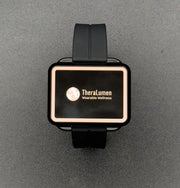Time is running out, our 10% OFF sale! Code: WELCOME10
Sept 26th, 2023
Shedding Light on Cellular Defense: How Low-Level Light Therapy Safeguards Red Blood Cells during Extracorporeal Procedures
Introduction
Low-Level Light Therapy (LLLT) has emerged as a ground-breaking method in medical science, showcasing its potential in mitigating oxidative stress that affects red blood cells, especially during extracorporeal circulation procedures.
"Harnessing the power of light, Low-Level Light Therapy stands as a beacon of hope, fortifying red blood cells against the onslaught of oxidative stress and ensuring vitality during extracorporeal journeys."
How Low-Level Light Therapy Works
Low-Level Light Therapy employs the use of light energy, typically in the red or near-infrared spectrum, to invoke a cellular response. This therapeutic approach helps accelerate wound healing, reduces inflammation, and stimulates the mitochondria in cells, enhancing their energy production.
The Crucial Role of Red Blood Cells
Red Blood Cells (RBCs) play a vital role in sustaining life. They are responsible for transporting oxygen from the lungs to every cell in the body and also aid in removing carbon dioxide, a waste product, to the lungs for exhalation. Maintaining the structural integrity of RBCs is essential for ensuring proper oxygenation and overall cellular health.
Addressing Oxidative Stress and Hemolysis
Oxidative stress is a condition that arises when there's an imbalance between the production of free radicals and the body's ability to counteract or detoxify their harmful effects through neutralization by antioxidants. In the context of RBCs, oxidative stress can lead to the premature destruction of these cells, a phenomenon called hemolysis. This can be particularly prevalent during medical procedures like extracorporeal circulation, where blood is circulated outside the body.
Benefits of Low-Level Light Therapy in Extracorporeal Circulation
LLLT offers significant benefits during extracorporeal procedures:
- Protection Against Oxidative Stress: LLLT enhances the antioxidant defense mechanisms in RBCs. This ensures the cells can effectively neutralize the harmful effects of free radicals.
- Reduction in Hemolysis: By fortifying the cell membrane and optimizing the cellular environment, LLLT plays a pivotal role in minimizing the risk of RBC destruction during extracorporeal circulation.
- Enhanced RBC Functionality: Beyond just protection, LLLT ensures that RBCs function at their peak, ensuring optimal oxygen delivery and carbon dioxide removal.
Conclusion
Low-Level Light Therapy, with its potent ability to shield red blood cells from oxidative stress and hemolysis, especially during extracorporeal circulation, has paved the way for safer and more efficient medical procedures. As technology and research advance, the potential applications and benefits of LLLT in the realm of medical science continue to unfold, offering promise for improved patient outcomes
Written by Rob Shockey







